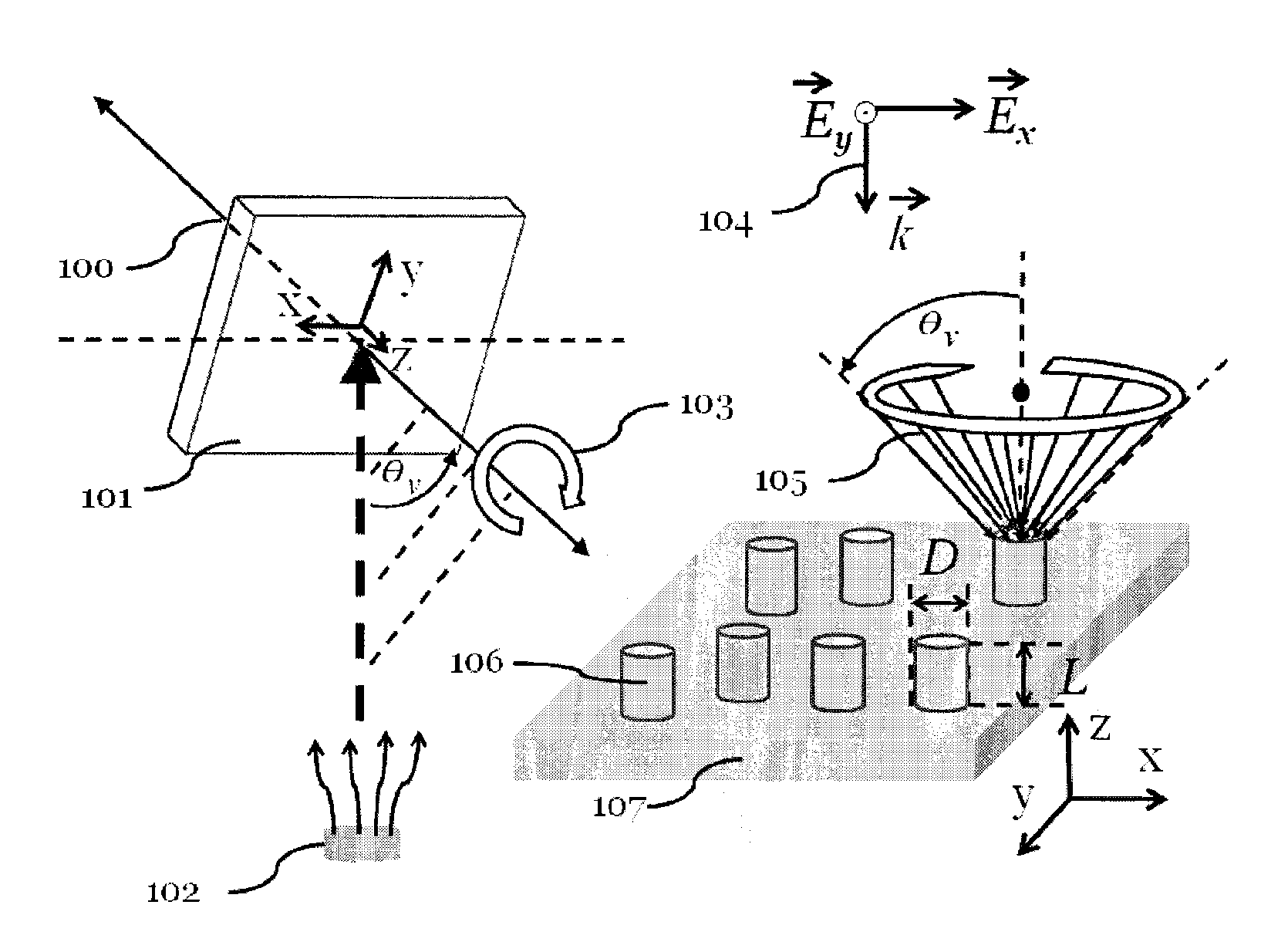Metal nanopillars for surface-enhanced Raman spectroscopy (SERS) substrate and method for preparing same
a raman spectroscopy and surface-enhanced technology, applied in the direction of spectrometry/spectrophotometry/monochromators, instruments, optical radiation measurement, etc., can solve the problem that the raman spectroscope is still more expensive than infra-red spectroscopy and limits its application
- Summary
- Abstract
- Description
- Claims
- Application Information
AI Technical Summary
Problems solved by technology
Method used
Image
Examples
embodiment
Preferred Embodiment
[0040]The FIG. 3(a) is used again for following reiterations. In an exemplified manufacturing process, the silver particles of 3 mm diameter of purity 99.999% are adopted as evaporation source 102 and the electron beam gun evaporation system is maintained at base pressure of 4×10−6 Pa. During deposition, the substrate is rotated about the axis of substrate normal line at a constant speed. The lengths of the pillars are controlled by using a quartz thickness monitor placed next to the substrate. The deposition rate is maintained and the deposition angle is kept at θv.
[0041]FIG. 2(a), (c), (e), (g) are respectively the top view diagrams taken by scanning electron microscope (SEM) for deposition speed=1.2 nm / s, θv=89 degrees, collocating with four types of substrate rotation speed of 20 rpm, 10 rpm, 1 rpm and 0.1 rpm, wherein in FIG. 2(a), (c), (e) nanopillar L=120 nm, and in FIG. 2(g) the nanopillar is L=250 nm.
[0042]FIG. 2(b), (d), (f), (h) respectively shows, at ...
PUM
| Property | Measurement | Unit |
|---|---|---|
| height | aaaaa | aaaaa |
| diameter | aaaaa | aaaaa |
| speed | aaaaa | aaaaa |
Abstract
Description
Claims
Application Information
 Login to view more
Login to view more - R&D Engineer
- R&D Manager
- IP Professional
- Industry Leading Data Capabilities
- Powerful AI technology
- Patent DNA Extraction
Browse by: Latest US Patents, China's latest patents, Technical Efficacy Thesaurus, Application Domain, Technology Topic.
© 2024 PatSnap. All rights reserved.Legal|Privacy policy|Modern Slavery Act Transparency Statement|Sitemap



